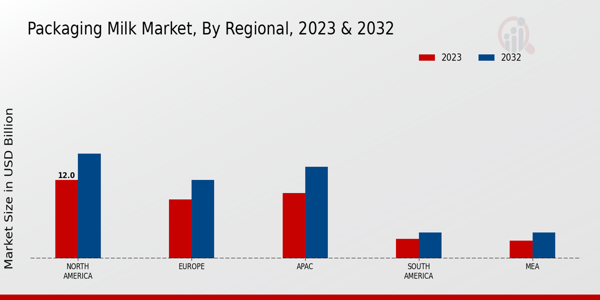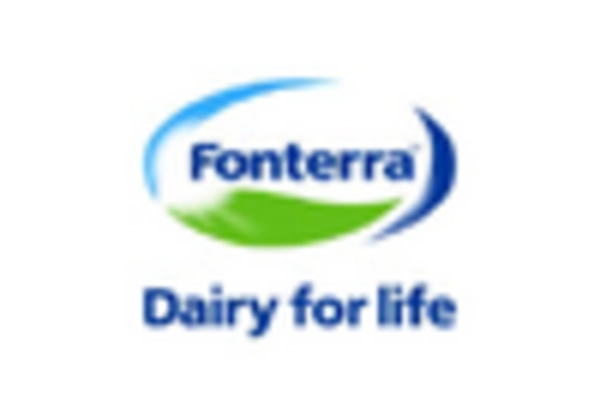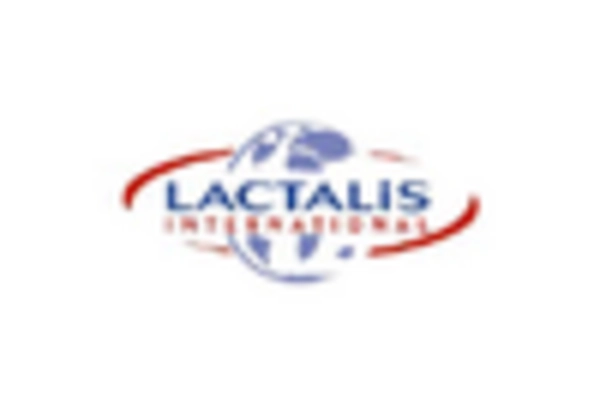Rising Demand for Convenience
The Packaging Milk Market experiences a notable surge in demand for convenience-oriented products. Consumers increasingly favor ready-to-drink milk options that require minimal preparation. This trend is particularly pronounced among busy urban populations, where time constraints drive purchasing decisions. According to recent data, the convenience segment is projected to grow at a compound annual growth rate of approximately 5.2% over the next five years. This shift towards convenience influences packaging design, with manufacturers focusing on single-serve and resealable options. As a result, the Packaging Milk Market adapts to meet consumer preferences, leading to innovative packaging solutions that enhance usability and portability.
E-commerce Growth and Online Shopping
The Packaging Milk Market is witnessing a transformative shift due to the rapid growth of e-commerce and online shopping platforms. With consumers increasingly turning to online channels for grocery purchases, the demand for packaging that ensures product integrity during transit has intensified. Data suggests that online grocery sales are expected to reach a value of over 200 billion in the next few years. This trend necessitates robust packaging solutions that can withstand shipping conditions while maintaining product freshness. Consequently, the Packaging Milk Market is adapting to these changes by developing packaging that is not only functional but also appealing to online shoppers.
Technological Advancements in Packaging
The Packaging Milk Market is significantly shaped by technological advancements that enhance packaging efficiency and product preservation. Innovations such as smart packaging technology, which includes QR codes and temperature indicators, are gaining traction. These technologies not only improve the consumer experience but also provide valuable data to manufacturers regarding product handling and shelf life. The integration of such technologies is expected to drive market growth, with projections indicating a potential increase in market value by 15% over the next five years. As technology continues to evolve, the Packaging Milk Market is likely to embrace these advancements to improve product quality and consumer engagement.
Sustainability and Eco-Friendly Packaging
Sustainability has emerged as a pivotal driver in the Packaging Milk Market. Consumers are becoming more environmentally conscious, leading to a demand for eco-friendly packaging solutions. Recent surveys indicate that over 60% of consumers prefer products with sustainable packaging. This shift is prompting manufacturers to explore biodegradable and recyclable materials for milk packaging. As regulations around plastic usage tighten, the Packaging Milk Market is likely to see a significant transformation towards sustainable practices. Companies that prioritize eco-friendly packaging may gain a competitive edge, appealing to a growing segment of environmentally aware consumers.
Health Consciousness and Nutritional Awareness
The Packaging Milk Market is significantly influenced by the growing health consciousness among consumers. There is an increasing awareness of the nutritional benefits of milk, including its role in a balanced diet. Recent studies indicate that approximately 70% of consumers prioritize health benefits when selecting dairy products. This trend has prompted manufacturers to highlight nutritional information prominently on packaging. Additionally, the rise of lactose-free and fortified milk options caters to specific dietary needs, further expanding the market. As health trends evolve, the Packaging Milk Market is likely to see continued innovation in product offerings and packaging that emphasizes health benefits.


















Leave a Comment